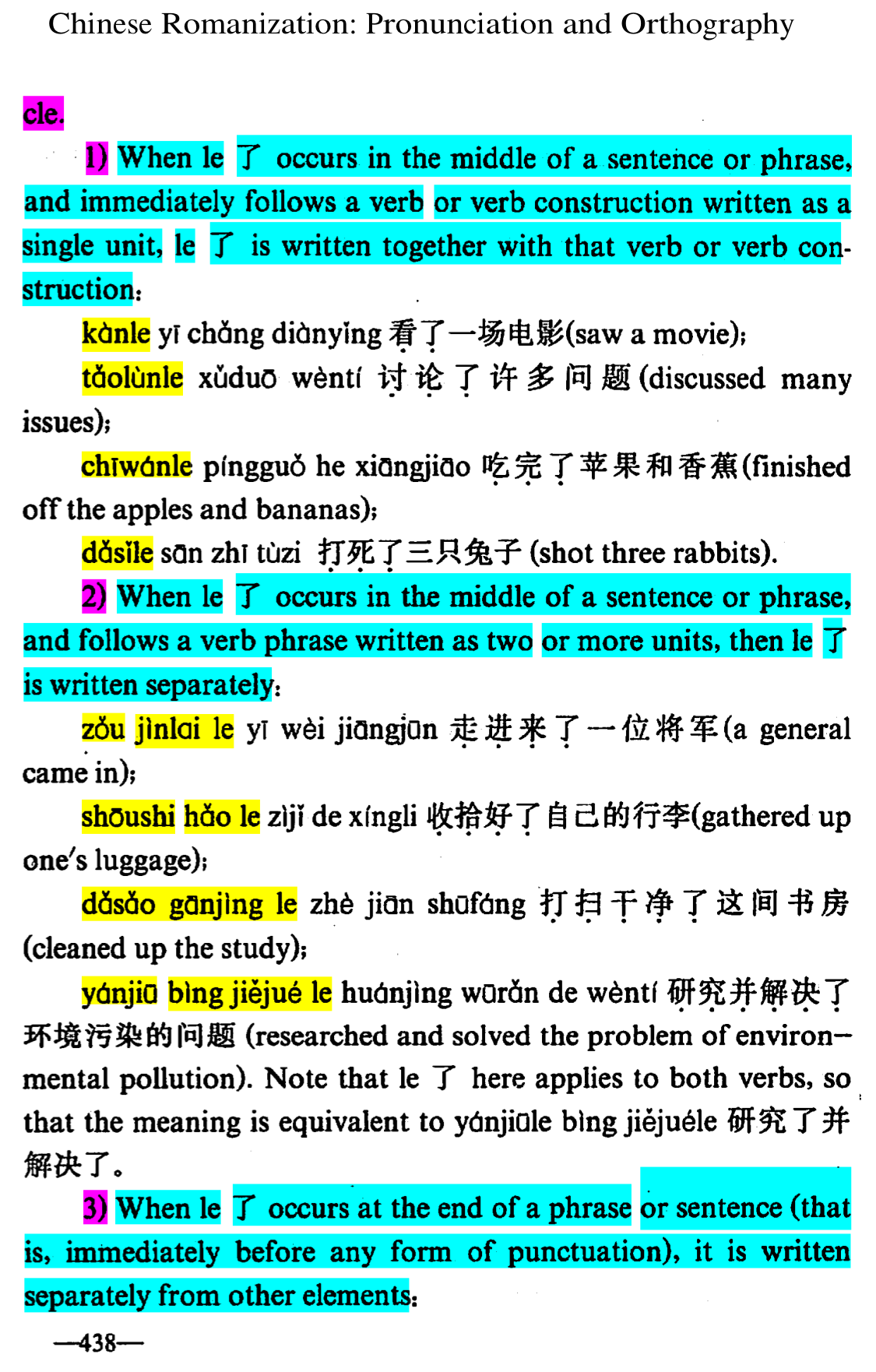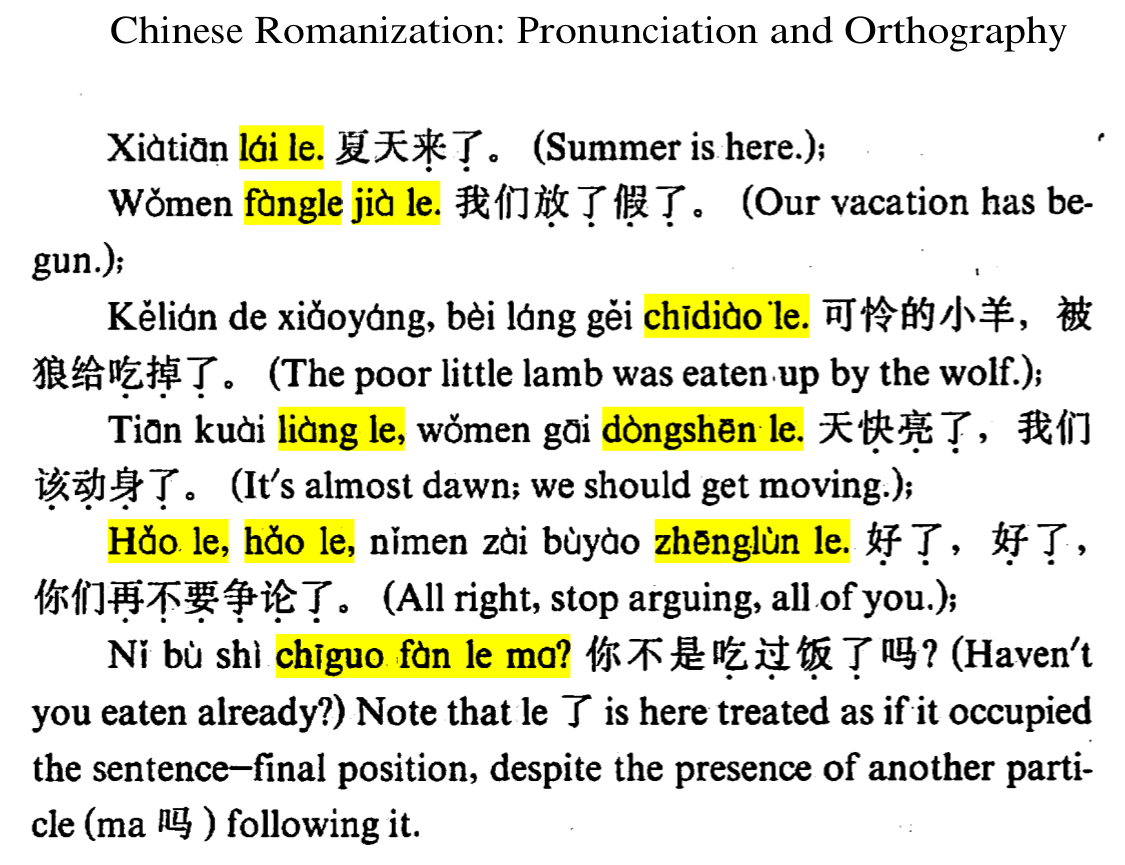xiǎnyǎn bāo ((xiǎn·yǎn {appears; shows; displays; manifests; {[is] obvious; evident; clear; apparent; noticeable} (to)} · eye → [conspicuous; showy; eye-catching; glamorous] 显眼 顯/顕眼) (bāo wrapping → [bun (food)] 包) → [attention-seeker; goofball; one who stands out from the crowd to get attention]) ← Tap/click to show/hide the “flashcard”
With 2023 having just recently receded into history, it’s a good time to check out collections of some of the top Mandarin slang expressions used during 2023. A couple of articles that I found that discuss some of these expressions are:
- Mentally Stable: Top Memes and Slang of 2023 (The World of Chinese)
- The Language of Now: China’s Best Internet Slang in 2023 (Sixth Tone)
The only expression that appears on both of these lists is “xiǎnyǎn bāo ((xiǎn·yǎn {appears; shows; displays; manifests; {[is] obvious; evident; clear; apparent; noticeable} (to)} · eye → [conspicuous; showy; eye-catching; glamorous] 显眼 顯/顕眼) (bāo wrapping → [bun (food)] 包) → [attention-seeker; goofball; one who stands out from the crowd to get attention])”, this week’s MEotW.
Its Constituent Morphemes
The first morpheme in this expression is “xiǎn (appear; show; display; manifest; {[is] obvious; evident; clear; apparent; noticeable [→ [[is] illustrious; powerful; influential]} 显 顯/顕)”, which here means “appears; shows; displays; manifests; [is] obvious/evident/clear/apparent/noticeable (to)”. Some other expressions that include this morpheme are:
- míngxiǎn (míng·xiǎn {[is] clear; distinct} · {[is] obvious; evident; clear; apparent; noticeable} → [[is] clear; obvious; evident; distinct; manifest] 明显 明顯)
- xiǎnrán (xiǎn·rán {[is] evident; obvious; clear}·ly 显然 顯然)
- xiǎnshì (xiǎn·shì {to be evident/obvious} · show 显示 顯示)
When “xiǎn (appear; show; display; manifest; {[is] obvious; evident; clear; apparent; noticeable [→ [[is] illustrious; powerful; influential]} 显 顯/顕)” is put together with “yǎn (eye 眼)”, which means “eye”, the resulting expression “xiǎnyǎn (xiǎn·yǎn {appears; shows; displays; manifests; {[is] obvious; evident; clear; apparent; noticeable} (to)} · eye → [conspicuous; showy; eye-catching; glamorous] 显眼 顯/顕眼)” effectively means “conspicuous; showy; eye-catching; glamorous”.
The last morpheme of this expression, “bāo (wrapping [→ [including; containing | assuring; guaranteeing | bundle; package; pack; packet; parcel | bag; sack | bun (food)]] 包)”, literally means “to wrap”, but one of its effective meanings is “bun”, that is, a bun that’s food, as opposed to, say, a hair bun. Some other expressions that include this morpheme are:
- bāokuò (bāo·kuò wrap · {draw together} → [include; consist of; comprise; incorporate] 包括)
- miànbāo (miàn·bāo {[wheat] flour} · {wrapping [→ [bun]]} → [bread] 面包 麵包)
- bāozi (bāo·zi {wrapping → [bun]} · [suf for nouns] → [steamed stuffed bun] 包子)
It’s evident that “bāo (wrapping [→ [including; containing | assuring; guaranteeing | bundle; package; pack; packet; parcel | bag; sack | bun (food)]] 包)”, with its meaning of “bun”, is used as a term of endearment in “xiǎnyǎn bāo ((xiǎn·yǎn {appears; shows; displays; manifests; {[is] obvious; evident; clear; apparent; noticeable} (to)} · eye → [conspicuous; showy; eye-catching; glamorous] 显眼 顯/顕眼) (bāo wrapping → [bun (food)] 包) → [attention-seeker; goofball; one who stands out from the crowd to get attention])”.
As a Whole
What are the constituent morphemes of “xiǎnyǎn bāo ((xiǎn·yǎn {appears; shows; displays; manifests; {[is] obvious; evident; clear; apparent; noticeable} (to)} · eye → [conspicuous; showy; eye-catching; glamorous] 显眼 顯/顕眼) (bāo wrapping → [bun (food)] 包) → [attention-seeker; goofball; one who stands out from the crowd to get attention])” being used to mean when they’re put together in this expression? The article in The World of Chinese that’s mentioned above says:
One type of dazi [shallow friend] many prefer these days is the 显眼包 (xiǎnyǎnbāo), or goofball. The term refers to people who stand out from the crowd and constantly seek attention. Although once considered a neutral term, it has gained a positive connotation recently, as many appreciate their vibrant energy in an often ultra-competitive society.
As for the article in Sixth Tone that’s mentioned above, it says this regarding this expression as a whole:
显眼包
Class Clown
Literally meaning “eye-catching,” 显眼包 (xiǎn yǎn bāo) and its variations appear in a number of Chinese dialects. The term became widespread online after Guo Beibei — a phenomenally popular internet celebrity who later lost her account for violating short video platform Kuaishou’s rules on “vulgar” content — began using it to describe herself. Now, it’s become a byword for attention-seekers, goofballs, and anyone who is willing to get weird for a like.
[Regarding the person mentioned in the above quote, I found an article about her on the website of The China Project. The article says that she has many fans who are homosexuals, although it does not mention whether she herself is homosexual. For what it’s worth, I remember that a sister who grew up in San Francisco (which famously has a significant homosexual population) once commented that she has observed that many homosexuals are quite self-centred. Perhaps that contributes to such ones liking standing out and getting attention.]
Good and Bad Ways to Stand Out
The world—which we know is ruled behind the scenes by Satan the Devil—has its celebrity culture, and it has an attention economy. (1 John 5:19) In contrast, in 1 Thessalonians 4:11, the apostle Paul gave Christians this advice:
Make it your aim to live quietly and to mind your own business
So, generally, Christians should not seek to stand out or get attention for themselves. Sometimes, though, true Christians naturally stand out because of being no part of Satan’s world, e.g., when avoiding celebrating holidays with pagan roots, or when refusing to participate in politics or war. More positively, in a world permeated by Satan’s spirit, Christians may also naturally stand out because of reflecting God’s spirit, applying God’s principles, and sticking to God’s standards. As Jesus, said, his true disciples should ‘let their light shine’.—Matthew 5:16.
Standing out because of not following human conventions and traditions is not necessarily a bad thing. Indeed, it’s sometimes necessary, and exactly the right thing to do, with Jesus himself setting the perfect example by his not following the traditions of the scribes and Pharisees of his day, which went beyond God’s requirements. However, actually going beyond God’s standards and requirements, as Satan, the demons, Adam and Eve, the Pharisees, and others who show a similar spirit have done, is indeed bad. So, it’s vitally important for us to cultivate the wisdom to be able to tell the difference.
Standing Out in the Mandarin Field
Comparing the two articles linked to above, I noticed that the The World of Chinese article renders Pīnyīn (Pīn·yīn {Piecing Together of} · Sounds → [Pinyin] 拼音) in a much better way than the Sixth Tone article does—the The World of Chinese article properly treats Pīnyīn (Pīn·yīn {Piecing Together of} · Sounds → [Pinyin] 拼音) as a separate, alternate full writing system with spaces between whole words rather than between every syllable, while the Sixth Tone article just treats Pīnyīn (Pīn·yīn {Piecing Together of} · Sounds → [Pinyin] 拼音) like a mere pronunciation aid for the characters. Still, in a Language Log blog post of his own, Prof. Victor H. Mair made the following interesting comment regarding the expressions presented in the Sixth Tone article:
Three of the ten items either feature roman letters or consist entirely of English. Remember what Mark Hansell said years ago about roman letters becoming a part of the Chinese writing system:
Mark Hansell, “The Sino-Alphabet: The Assimilation of Roman Letters into the Chinese Writing System,” Sino-Platonic Papers, 45 (May, 1994), 1-28 (pdf)
Roman letters certainly stand out among Chinese characters.
As for characters themselves, one of the possible meanings of “xiǎnyǎn (xiǎn·yǎn {appears; shows; displays; manifests; {[is] obvious; evident; clear; apparent; noticeable} (to)} · eye → [conspicuous; showy; eye-catching; glamorous] 显眼 顯/顕眼)” is “glamorous”, and Chinese characters are considered glamorous by some. With their eye-catching visual designs, they are by nature—and probably by design—xiǎnyǎn (xiǎn·yǎn {noticeable (to)} · eye → [glamorous] 显眼 顯/顕眼), as are idols and images used in idolatrous worship.
In many workplaces, there are the Big Cheeses who focus on getting the glory, and there are the ones who are actually good at doing the work.
In the work of writing Mandarin, characters are like those Big Cheeses, & _Pīnyīn_ is like those who are actually good at doing the work. pic.twitter.com/98m5B7lEou
— Troubadour WW (@troubadourww) November 2, 2023
In the Mandarin field, is it going too far to use Pīnyīn (Pīn·yīn {Piecing Together of} · Sounds → [Pinyin] 拼音) at times instead of always using characters? Is that being too xiǎnyǎn (xiǎn·yǎn {noticeable (to)} · eye → [conspicuous] 显眼 顯/顕眼) in a world where so many people use and promote characters? Should we just go along to get along? Well, as has been discussed on this blog and elsewhere, Chinese characters are from humans, not from God, and thus the traditions surrounding characters are no more binding on God’s true servants today than the traditions of the Pharisees were on Jesus, and I hope none of us would have told Jesus to “go along to get along”! (As I recall, the apostle Peter tried to tell Jesus something similar once, and Jesus, um, didn’t respond positively.) So, it is fine to take advantage of the practical benefits of Pīnyīn (Pīn·yīn {Piecing Together of} · Sounds → [Pinyin] 拼音) when you can to help you serve God more effectively, and to just use characters when you have to.


